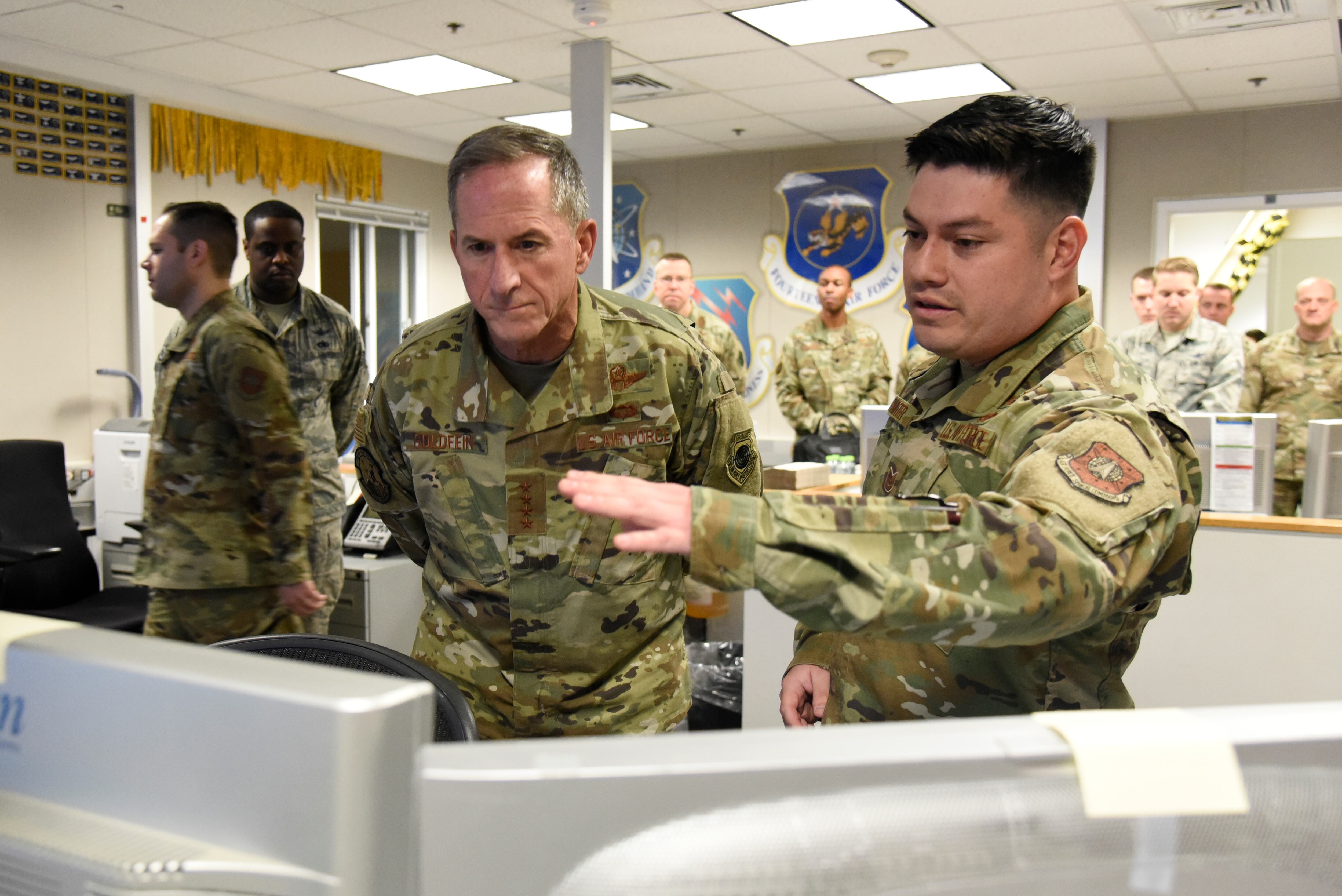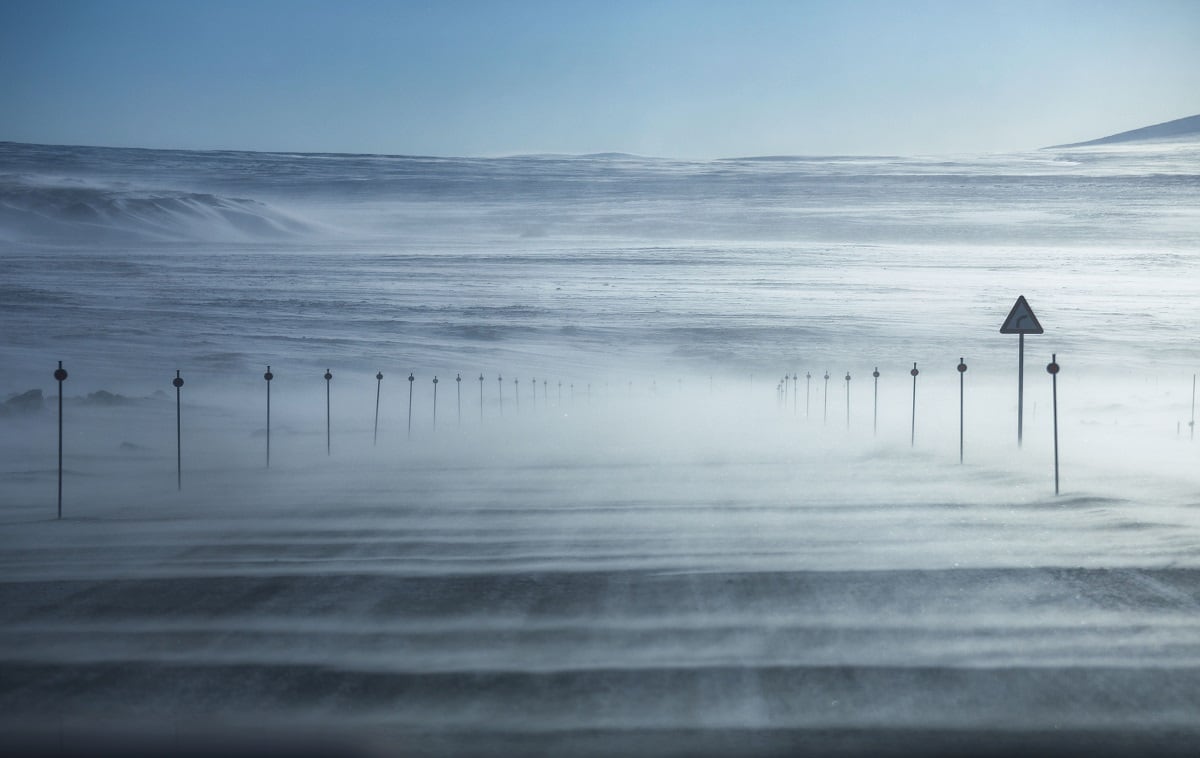THULE AIR BASE, Greenland — On July 5, a Soyuz rocket blasted off from Vostochny Cosmodrome in the easternmost territory of Russia, carrying with it 33 satellites, including a polar-orbiting Meteor M2-2 weather satellite owned by the Russian government and a host of cubesats and nanosatellites launched on behalf of universities and commercial entities.
More than 3,500 miles away, the airmen of Thule Air Base in Greenland were watching, dispatching real-time reports to the Combined Space Operations Center, or CSpOC, at Vandenburg Air Force Base, California.
Located on the northwestern coast of Greenland, Thule Air Base is the U.S. military’s northernmost base and the only installation north of the Arctic Circle. It is home to the 12th Space Warning Squadron, a cadre of Air Force officers and enlisted personnel that provide 24/7 missile warning and space surveillance using a massive AN/FPS-132 radar.

“In the case of the Russian launch, it was an advertised launch, and so information about the number of payloads and the launch location and intended orbit were published,” said Maj. Jason Bullock, the 12th SWS’ operations officer.
“We take that information and we use it to perform innovative mission planning to include computer modeling of how it will come through our coverage, and it helps us to task the radar in specific ways to direct energy in specific ways to ensure that we capture anything that comes through our coverage,” he told Defense News in a July interview.
Thule’s position on the globe and its radar’s 240 degrees of coverage — which projects over the Arctic Ocean and Russia’s northern coast — make it an ideal location to track intercontinental ballistic missiles and satellites in low-Earth orbit, including polar orbit satellites.
On a given day, the 12th SWS will record the trajectories of hundreds of satellites, including dozens of “high interest objects” that the CSpOC deems worthy of additional attention based on its country of origin, payload or mission, Bullock said.
It also keeps a constant watch for activities that may indicate the United States is under threat of nuclear attack via ICBMs or submarine-launched nuclear missiles.
Air Force Chief of Staff Gen. Dave Goldfein visited Thule for the first time July 20, accompanied by Defense News. In an interview after the trip, he said he was struck by the spartan conditions and harsh environment of the remote air base. In the summer, days last 24 hours, and the sun never sets. In the winter, the opposite is true, with no daylight for months.
Finding “happy lights” said to boost serotonin stashed in the corner of a conference room is not an uncommon sight, and airmen get used to having only sporadic cellphone and internet access.
There is no nearby town, so all airmen — who are deployed for one-year periods — live in dormitories. Cars, equipment and the base’s 1960s-era generator are powered by JP-8 jet fuel. The base’s solitary runway — while still operational — is in need of repair, and whole hangars lay abandoned and unusable, their floors cracked and uneven due to being built on permafrost.
The AN/FPS-132 radar operated by the 12th SWS, which Bullock said is roughly 10 years old, is one of the newer pieces of technology on-site and has also undergone periodic software upgrades since being fielded.
But basically the facilities at Thule are “sort of 1960s technology,” Goldfein said.
“They’re doing a great job of taking care of them. But how long do you keep them up and running with the harsh conditions they live with?” he wondered. “That’s something I’ll be talking to our installations and environments folks and civil engineers just to give me an update on what our way ahead is. This is critical terrain. We’re going to be there for a while."
Besides being a critical site for missile defense and space situational awareness, Thule hosts the Defense Department’s northernmost deep-water seaport and airfield. Those physical attributes are often overlooked when talking about the strategic importance of Thule, said Heather Conley, the senior vice president for Europe, Eurasia and the Arctic at the Center for Strategic and International Studies.
“We have not thought more creatively about how to use Greenland,” Conley said.
“China has,” she added, pointing to the nation’s interest in building airports and research facilities in Greenland.
RELATED

If the Air Force presses to modernize Thule’s infrastructure, it also will be on the heels of ongoing Russian efforts to do the same. The U.S. Defense Department’s new Arctic strategy, released in June, notes that Russia has “gradually strengthened” its presence in the region by refurbishing old airfields and infrastructure in the Arctic, establishing new bases along its northern coastline, and setting up a mesh of air defense systems, early warning radars and sensors.
“To ensure a credible deterrent for the Arctic, DoD must be able to quickly identify threats in the region, respond promptly and effectively to these threats, and shape the security environment to reduce or mitigate the prospects of these threats manifesting in the future,” the strategy states.
But although the strategy cites the challenges that Russia and China pose in the Arctic, it’s unclear whether the Department of Defense is ready make the investments in its Arctic bases necessary to maintain access and deter potential adversaries, Conley said.
“We need to move to implementation, but that’s where you don’t see the dollars in the budget,” she added.
Operating at the top of the world
On the top of a hill sits an austere building capped with two enormous radar faces. The site is home to the 12th Space Warning Squadron, but could easily be mistaken for a set from John Carpenter’s landmark 1982 horror film “The Thing.” Inside are airmen providing security and monitoring the radar feed, as is always the case.

No matter whether the 12th SWS is tracking a rocket launch or an ICBM, the mission starts with a cue from the Air Force’s Space Based Infrared System, or SBIRS, satellites, which can detect the heat signature of a launch. Then it’s time for the airmen of the 12th SWS to figure out how to best utilize the radar to gather as much information as possible.
"In the unlikely event that the radar believes it has detected a missile, it will go into sight-reporting mode and will direct extra energy on the object, and the crew will gather all information that’s available about the health of our system to determine if the sight report is valid, anomalous or under investigation,” Bullock said. The squadron will also collect information about the trajectory of the object; and if it’s a missile, what its impact location might be.
As data comes in from SBIRS, the 12th SWS will send a report to the Missile Warning Center at Cheyenne Mountain Air Force Station in Colorado Springs, Colorado, whose personnel will determine whether the object in question is a ballistic missile.
"As part of that, it's critical that we perform our reports in a timely manner,” Bullock said. “We have very strict reporting requirements. Because by the time our radars detect an incoming missile, there is very little time to respond."
It’s a high-pressure situation for the crews who work 12-hour shifts for three days at a time — and sometimes end up having to spend the night on-site when snowy weather makes it too dangerous to drive to and from the dorms.
The radar feed is controlled by three airmen, usually an officer who acts as crew commander and two enlisted personnel, who also make phone calls to other space and missile defense organizations, while keeping up with the latest intelligence reports and monitoring the health of the radar.
The United States has never been under attack by an ICBM, but false alarms do happen. “There are occasional times where an object would be returning to Earth in a ballistic trajectory, and the radar may interpret it as a ballistic trajectory, and so it will go into sight-reporting mode. It could be a decaying satellite [or] just a satellite in low-Earth orbit,” Bullock said.
Although the squadron’s primary mission is missile defense and missile warning, its secondary mission of providing constant space situational awareness keeps it busy most days.
"In some cases we will task the radar in a specific manner to ensure we get the object,” Bullock said. “All of our space surveillance goes to the Combined Space Operations Center and helps us to build what’s called an element set, which allows us to know where the object is in space and where it’s going. And that’s all collected in the space track catalog maintained at Vandenburg.”
Valerie Insinna is Defense News' air warfare reporter. She previously worked the Navy/congressional beats for Defense Daily, which followed almost three years as a staff writer for National Defense Magazine. Prior to that, she worked as an editorial assistant for the Tokyo Shimbun’s Washington bureau.





